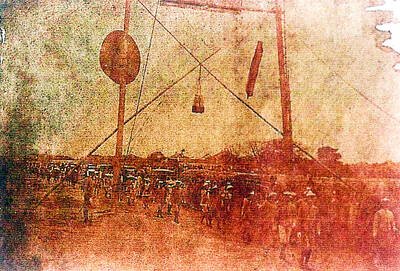The last of the Yugoslav-era cars, known for their lack of reliability as much as tasteless design and crude unworkmanlike finish, rolled off the assembly line in Serbia on Friday, nearly two decades after Yugoslavia itself fell apart.
Zastava, the car factory in the central Serbian town Kragujevac, has effectively ceased to exist and, following a massive investment by the Italian giant Fiat, is to begin making a modern small car.
Launched in 1953 in a country recovering from a destructive war while trying to implement its own form of socialism, Zastava was to prove that Yugoslavia could build a car of its own.
Some 4.3 million cars have rolled out of Kragujevac since, but only a few different models, including the Zastava 750, then the 128, and the prestigious 1300 (all based on Fiat models) and the independently made Zastava 101, the Yugo and the relatively spacious Zastava Florida.
The last Zastava car to roll off the assembly line was a 101 model, which had been in production with only slight cosmetic changes since 1971. The Yugo — the most-produced and best-known — went of out production a day before the 101 did.
The Yugo was a boxy two-door hatchback made from a design that was hopelessly outdated even when it was presented three decades ago. The Zastava 101 at least had four doors, but otherwise was largely the same car. Any Zastava engine tended to lose compression after just a few thousand kilometers and its gearbox would generally lose the third gear shortly afterward.
Zastava seats were sometimes fitted in at strange angles, the doors tended not to align with the body and could generally be unlocked with any key. The paint would go quickly in the sun, the rear windshield wiper machine would inevitably burn out.
These problems, in combination with the “Yugoslav deal of the century” in the 1980s, in which several hundred thousand of cars where shipped to the US, secured the Yugo lasting fame — or infamy, depending on one’s point of view.
Unlike many other cars of similarly poor quality made around the globe, the Yugo was briefly exposed to what the average Serb called the “spoiled” market in the US. Without that exposure, the car would never have become a regular in polls for the “worst cars in history,” “worst car ever” and “worst car of the millennium.” Nor would it have made it to become the star of so many jokes, such as: Why does a Yugo have rear window heaters? So your palms don’t freeze when you’re pushing it.
The Yugo made it to Hollywood, too, starring with Tom Hanks and Dan Aykroyd in Dragnet, with Bruce Willis in Die Hard 3 and in Danny DeVito and Bette Midler’s Drowning Mona, in which everybody in the fictional town drove one.
But in Yugoslavia, later Serbia, the Yugo and the other Zastava models were the “people’s car” — cheap, repairable at every street corner and as tradable as cash.
“These cars were fantastic — cheap and simple. Low maintenance costs, anyone could fix it and the parts were cheap,” said Milojka Minic, a worker in the Zastava factory.
“I’ll keep it until I die,” says Krsta Vukovic, a Belgrade pensioner who spends a part of virtually every dry day to tool around his 1989 — once carmine red, now faded pink — Model 101.
So despite the cars obvious shortcomings, many in Serbia will miss Zastava. To the consolation of those feeling nostalgic, the end was long overdue and would have come much sooner without massive subsidies.
After all, the production had dropped from more than 200,000 units at the peak of the deal with the US, to just a few thousand that was the benchmark for much of the past 15 years.
Now, with Fiat taking over, after many years in the doldrums, the town of Kragujevac may hope to regain at least some of the shine it had as the “industrial pearl” of Serbia.

One of the biggest sore spots in Taiwan’s historical friendship with the US came in 1979 when US president Jimmy Carter broke off formal diplomatic relations with Taiwan’s Republic of China (ROC) government so that the US could establish relations with the People’s Republic of China (PRC). Taiwan’s derecognition came purely at China’s insistence, and the US took the deal. Retired American diplomat John Tkacik, who for almost decade surrounding that schism, from 1974 to 1982, worked in embassies in Taipei and Beijing and at the Taiwan Desk in Washington DC, recently argued in the Taipei Times that “President Carter’s derecognition

This year will go down in the history books. Taiwan faces enormous turmoil and uncertainty in the coming months. Which political parties are in a good position to handle big changes? All of the main parties are beset with challenges. Taking stock, this column examined the Taiwan People’s Party (TPP) (“Huang Kuo-chang’s choking the life out of the TPP,” May 28, page 12), the Democratic Progressive Party (DPP) (“Challenges amid choppy waters for the DPP,” June 14, page 12) and the Chinese Nationalist Party (KMT) (“KMT struggles to seize opportunities as ‘interesting times’ loom,” June 20, page 11). Times like these can

June 23 to June 29 After capturing the walled city of Hsinchu on June 22, 1895, the Japanese hoped to quickly push south and seize control of Taiwan’s entire west coast — but their advance was stalled for more than a month. Not only did local Hakka fighters continue to cause them headaches, resistance forces even attempted to retake the city three times. “We had planned to occupy Anping (Tainan) and Takao (Kaohsiung) as soon as possible, but ever since we took Hsinchu, nearby bandits proclaiming to be ‘righteous people’ (義民) have been destroying train tracks and electrical cables, and gathering in villages

Dr. Y. Tony Yang, Associate Dean of Health Policy and Population Science at George Washington University, argued last week in a piece for the Taipei Times about former president Ma Ying-jeou (馬英九) leading a student delegation to the People’s Republic of China (PRC) that, “The real question is not whether Ma’s visit helps or hurts Taiwan — it is why Taiwan lacks a sophisticated, multi-track approach to one of the most complex geopolitical relationships in the world” (“Ma’s Visit, DPP’s Blind Spot,” June 18, page 8). Yang contends that the Democratic Progressive Party (DPP) has a blind spot: “By treating any